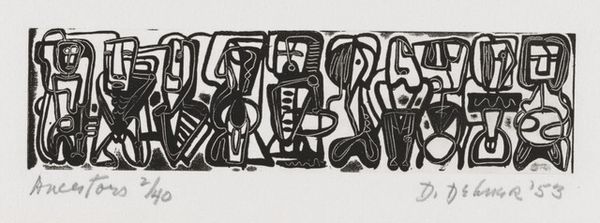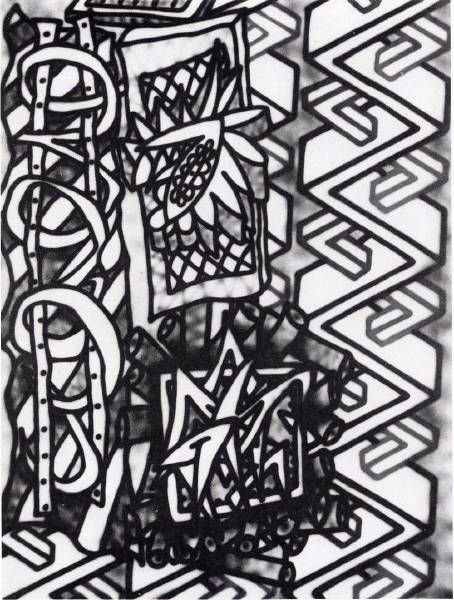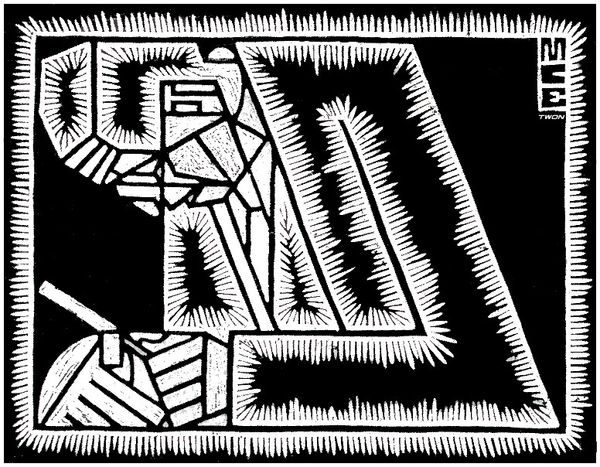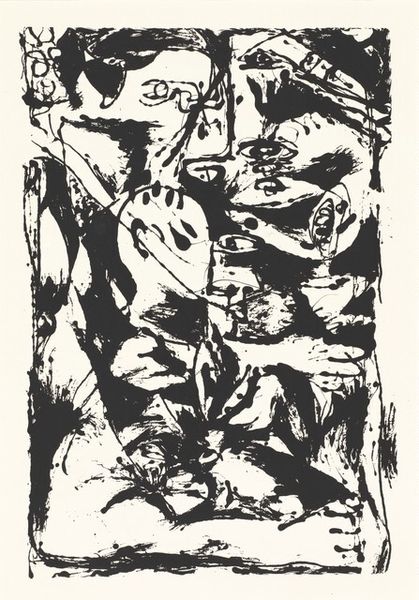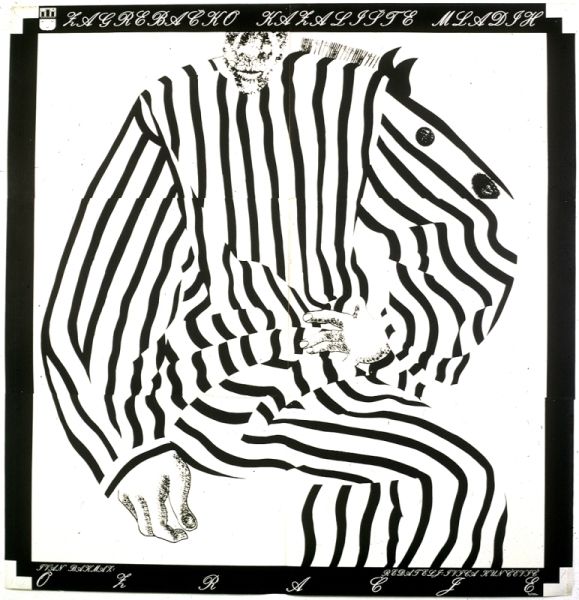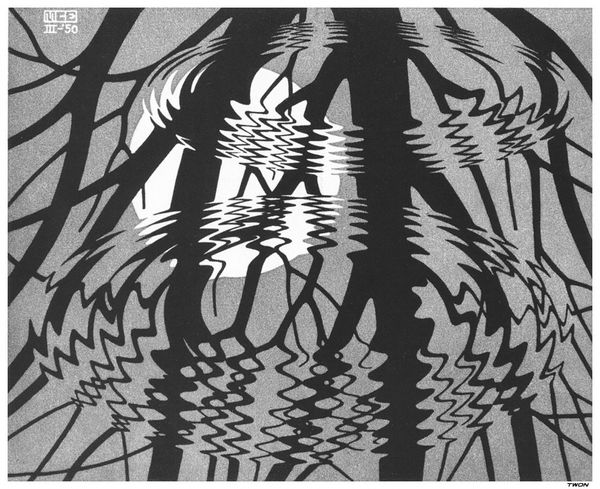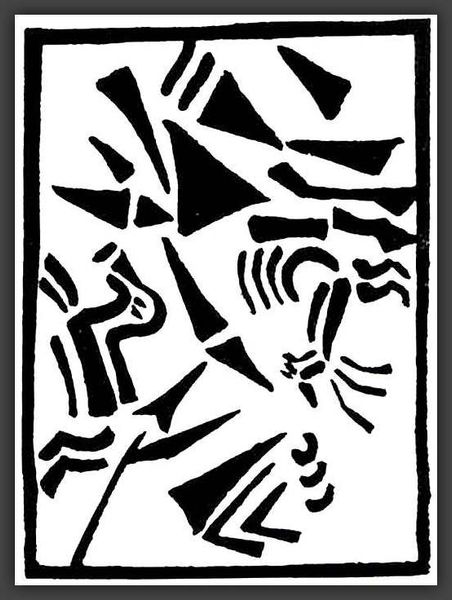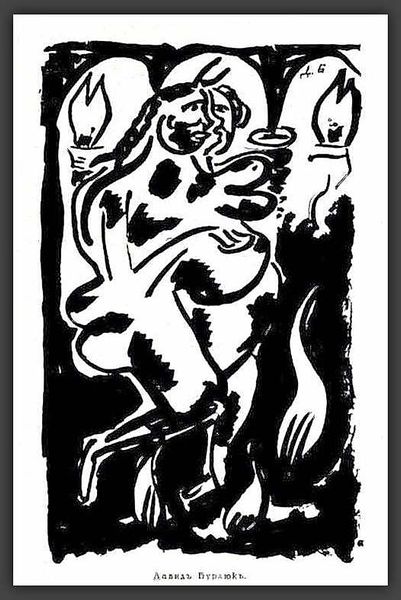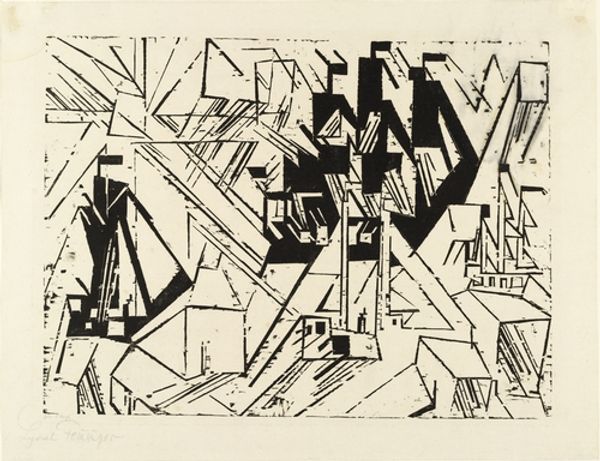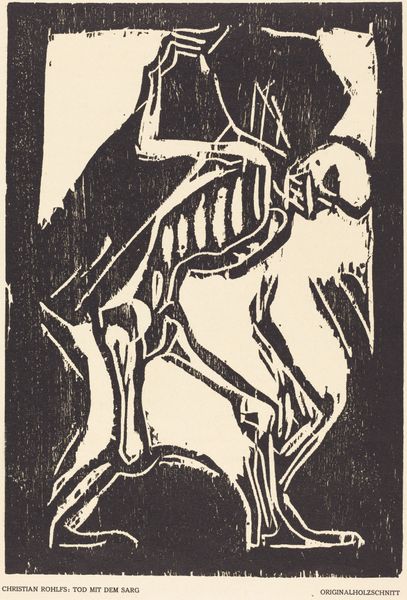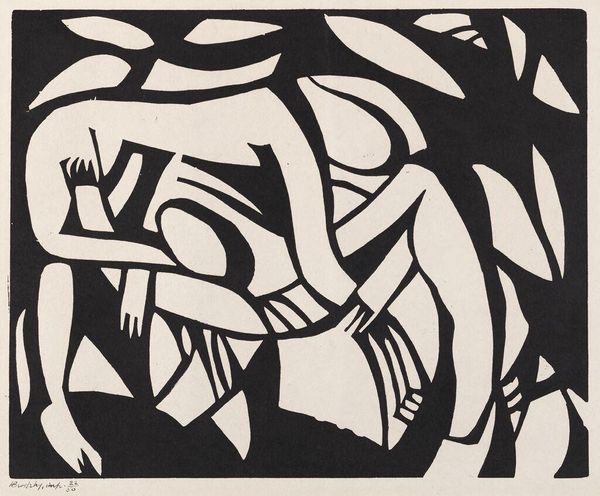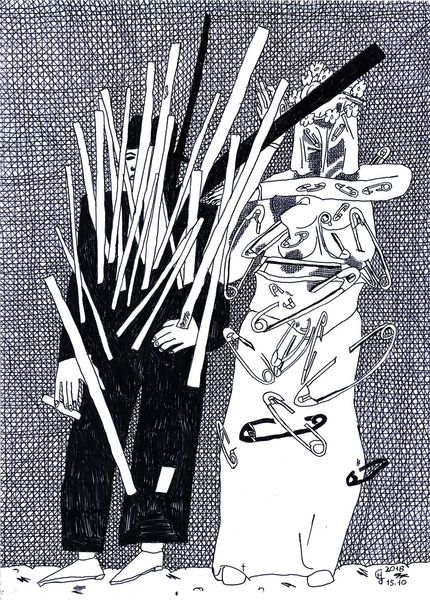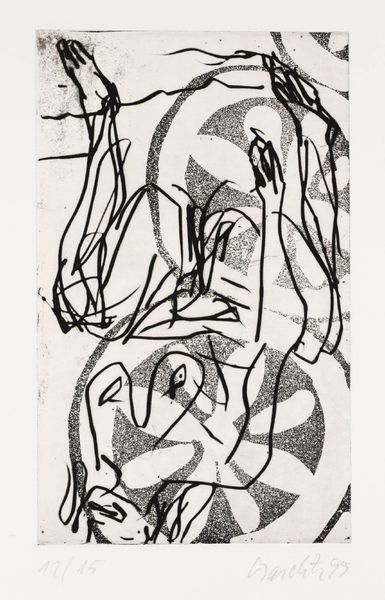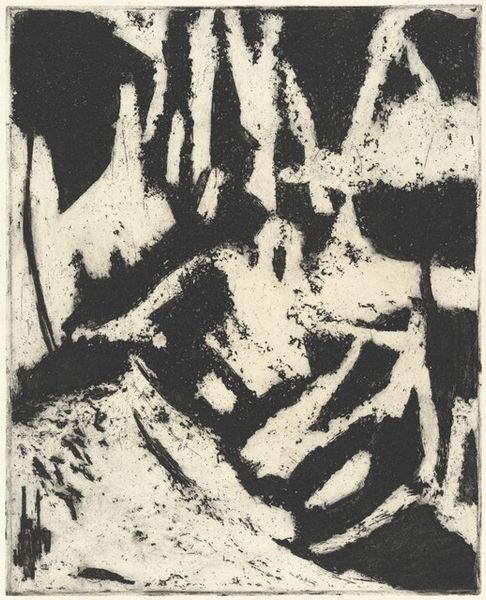
painting, acrylic-paint
#
painting
#
pattern
#
acrylic-paint
#
form
#
geometric
#
abstraction
#
line
#
modernism
Copyright: Melissa Meyer,Fair Use
Editor: This is Melissa Meyer's "Black and White Diptych," from 1989, done with acrylic paint. The strong contrast immediately catches the eye, but I am struggling to decipher meaning from the contrasting abstract forms. How would you interpret this work through a historical lens? Curator: Given Meyer's involvement with the feminist art movement, consider the ways abstraction can be a form of visual language. Do you see any shapes or arrangements that might hint at traditional gendered representation or a disruption of those norms? Think about the power dynamics implied by the black and white contrast too. Editor: That's interesting. I hadn't thought about a potential feminist reading, but the stark opposition could be seen as challenging the male dominance of the art world. It feels very confrontational! Do you think that the lack of color has any broader symbolic importance here? Curator: Absolutely! The limited palette certainly amplifies the boldness, it shifts our attention away from surface appearances, demanding a deeper consideration of form, pattern and the relationships between them. Black and white has long carried socio-political weight; purity, mourning, authority, and graphic impact. Its usage demands scrutiny. Knowing that it was made in 1989 - just as the art world and wider society was grappling with identity and postmodern thought, what associations arise for you now? Editor: Considering all of those factors, it makes the diptych more about pushing boundaries. The lack of color creates this intense drama; everything becomes about line, shape and challenging expectations of representation, both political and personal. Curator: Precisely. Meyer pushes us to actively question the visual language we've inherited and who gets to control it. It reveals so much about our social framework. Editor: That’s really changed how I see the painting. I was initially drawn in by the sharp contrasts, but now, after thinking about the art's history, I find it a truly compelling visual challenge. Thanks for illuminating its complexity!
Comments
No comments
Be the first to comment and join the conversation on the ultimate creative platform.
